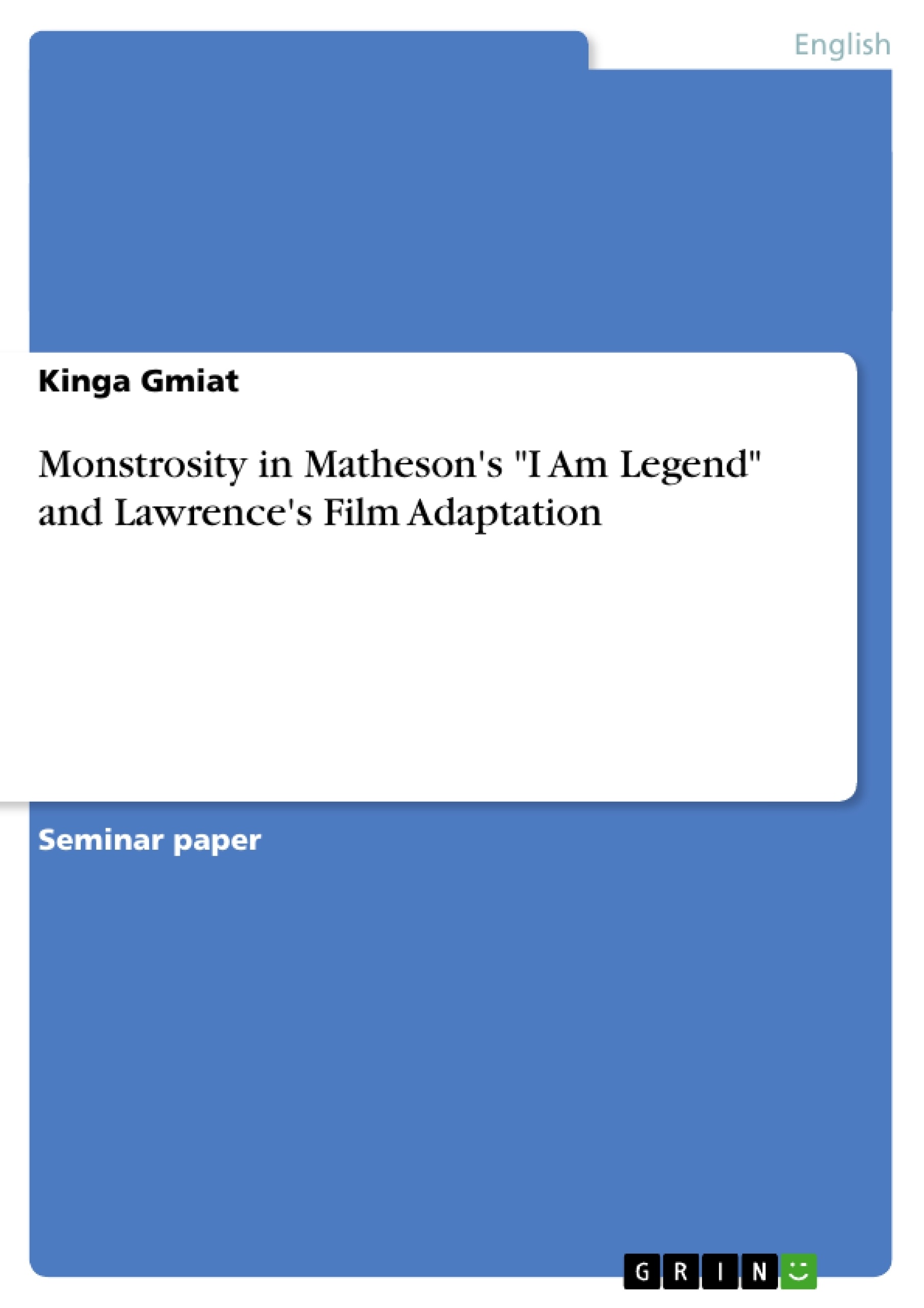It is difficult to imagine our world without monsters. Their hideous appearance and scary behavior became integrated in our lives and culture. No culture can live without monsters. Children at an early age fear monsters under their beds and adolescents fight against monsters in computer games. We read about them in fictional literature and see them in classic movies as well as new publications. Monsters have always played an important role in culture.
But what are monsters? How do they find their way into our society and where do they come from? Not only are they defined by their deterrent appearance but also by qualities ascribed by the culture they appear in (cf. Murgatroyd 2007, p. 2). The anthropologist Jeffrey Jerome Cohen deals with monsters and their role in society. In his work called “Monster Theory” he proposes a method of understanding cultures through the monsters they invent by giving seven theses explaining the monster´s characterizations (cf. Cohen, Jeffrey Jerome: Monster Culture (Seven Theses). In: Monster Theory. Reading Culture. Minneapolis 1996, p. 3f.). Cohen´s second thesis “The Monster Always Escapes” will be of special interest to us. Also referring to Cohen´s first thesis “The Monster´s Body Is A Cultural Body” we will examine how monsters are born into society and how they keep on living within the frames of cultural, political and social relations. Afterwards we will apply Cohen´s thesis to Richard Matheson´s “I Am Legend”, a Science Fiction and horror novel, which deals with monsters in form of vampires. In Matheson´s fictional work the protagonist Robert Neville, as the only human being, lives in a world of bloodthirsty vampires. Neville, trying to understand the germ which created the disease and to which he himself is immune, does scientific researches. He haunts the vampires and kills them, when ultimately he is captured by a pair of infected survivors. The novel is set in Los Angeles.
List of contents
1. Introduction
2. “ The monster always escapes” – The return of the undead
3. Richard Matheson´s I Am Legend
3.1 Reappearance of the monstrous
3.2 Racial issues and feminine sexuality
3.3 Shifting monstrosity
4. Francis Lawrence’s film adaptation
4.1 Reappearance of the monstrous
4.2 Terrorism and religion
4.3 Shifting monstrosity
5. Conclusion: cultural, social and political context
5.1 Postwar America
5.2 Post-9/11 America
5.3 Comparison between book and film adaptation
6. Bibliography
- Quote paper
- BA Kinga Gmiat (Author), 2013, Monstrosity in Matheson's "I Am Legend" and Lawrence's Film Adaptation, Munich, GRIN Verlag, https://www.grin.com/document/230739
-

-

-

-
Upload your own papers! Earn money and win an iPhone X. -

-
Upload your own papers! Earn money and win an iPhone X. -

-
Upload your own papers! Earn money and win an iPhone X. -

-
Upload your own papers! Earn money and win an iPhone X. -

-
Upload your own papers! Earn money and win an iPhone X. -

-
Upload your own papers! Earn money and win an iPhone X. -

-
Upload your own papers! Earn money and win an iPhone X. -

-
Upload your own papers! Earn money and win an iPhone X. -

-
Upload your own papers! Earn money and win an iPhone X.

